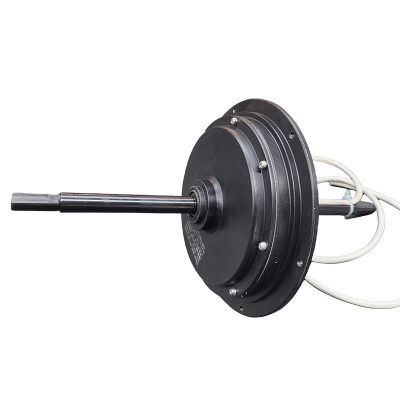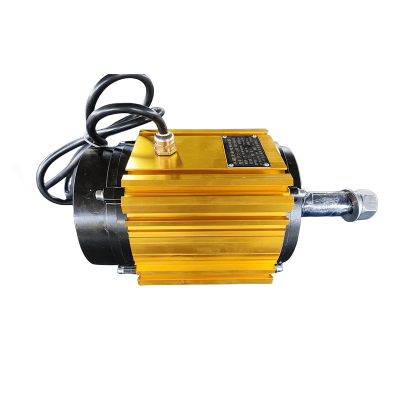The self-starting three-phase permanent magnet synchronous motor is a new type of motor. It has high efficiency, high performance, high reliability and no pollution, which makes it highly praised. If you want to use this motor, how can you do it without understanding its principle and structure? Today, the editor will show you its principle and structure.
principle
This motor is a motor that uses permanent magnets to generate a magnetic field on the rotor and runs synchronously with the traveling wave magnetic field in the three-phase AC power grid. Its controller can identify the rotor position and generate a rotating magnetic field synchronized with the magnetic field on the stator, thereby driving the rotor to rotate, and has good static and dynamic performance.
Compared with conventional asynchronous motors, this motor has a relatively high efficiency because it has no copper and iron losses and has smooth running characteristics under various load conditions.

structure
The self-starting three-phase permanent magnet synchronous motor consists of three parts: permanent magnet, rotor and stator. Among them, the permanent magnet is a component used to generate a permanent magnetic field on the rotor. It usually uses NdFeB magnetic material or SmCo magnetic material. The axial magnetic energy product of these two materials is higher than ten times.
The stator and rotor parts are equipped with stator windings and rotor windings respectively. The rotor winding contains permanent magnets, which generate magnetic force by applying alternating current instantaneously, thereby realizing the starting process of the motor.
Self-starting principle
The belt-lift method is a commonly used self-starting method. When the motor stops, the permanent magnet on its rotor is in an intermittent state, and there is a north and south pole on the permanent magnet that is about to be generated, but it has not yet been generated. At this time, a high-frequency voltage signal will be applied to the stator winding to put the stator electromagnetic system into an excitation state.
Then gradually change the frequency of this high-frequency signal so that the synchronous speed of the first attempt to match the rotating magnetic field is equal to the "swing times" of the permanent magnet, so that the stator electromotive force matches the rotating magnetic field phase.
In this state, the stator electromotive force based on the synchronous frequency is zero, and when the permanent magnet generates a rotating magnetic field, a small rotating magnetic field appears in the stator winding, which can cause some limited motion torque. Continuing the operation can gradually increase the motion torque, and the motor can achieve self-starting and normal operation.
Self-starting three-phase permanent magnet synchronous motor has been available for many years. Judging from customer feedback, it is still quite popular. In many high-efficiency power transmission and speed regulation systems, customers use it to replace traditional motors. I believe it will have a wider range of applications in the future.





